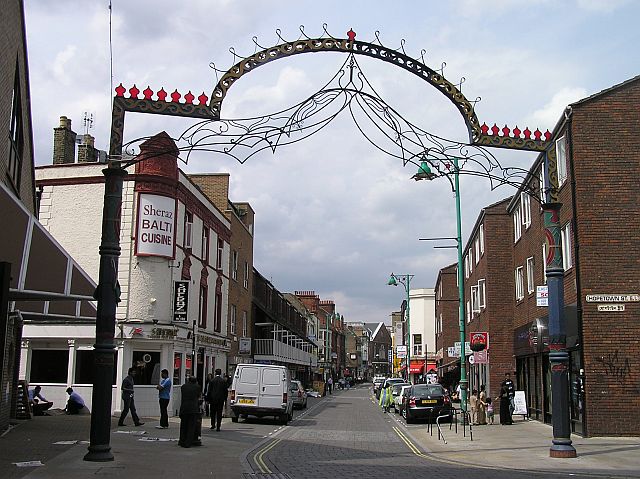
Situated in East London, Brick Lane is a street jam-packed with history. Brick Lane has long been a cultural hub, with Bengali culture being at the forefront. However, recent years have seen gentrification put Brick Lane at risk and begs the question of how to protect cultural hubs while still letting them evolve and grow.
Starting at the beginning of the origins of Bengali culture on Brick Lane takes us to 1600 CE, when the British East India Company was founded, allowing trade and migration to occur between England and India. Fast forward to the 1720s, India’s Bengal Region contributed over half of the company’s imports from the subcontinent. In 1757, Bengal was practically a province of the East India Company, and company officials would move to Bengal and make money off of land titles. 100 years later, in 1857, the East India Company was abolished and replaced by the British Crown, and tea became a major export from Bengal. At this point, Sylheti seafarers from Bengal, otherwise known as lascars, would start settling in East London. By 1938, over 50,700 lascars worked on British ships worldwide. After their contracts expired, these lascars were often abandoned in London ports. With no job, no home, and little to no money, they would settle in East London, around what is now Brick Lane. World War 1 saw even more Bengalis working on British ships before settling in the East End, and the Bengali population in East London grew steadily until 1945. This now significantly sized Bengali population was the first large South Asian community in Britain. It laid the foundations for the future of Banglatown and Brick Lane by establishing their own social programs, education centers, and many cafes, coffee houses, and curry houses.
The curry houses are especially important to Brick Lane and its history. As of the mid-2000s, there were 60 curry houses on Brick Lane alone. Think about that, 60 curry houses on one street.
As of 2018, however, that number was down to 23.
In recent years, Brick Lane has lost much of its foot traffic for many reasons. In 2010 and 2011, two new overground stations were built, which had the unfortunate side effect of talking foot traffic away from the south end of Brick Lane. Later, in 2014, a popular bar, The Vibe Bar, shut down, taking with it all of the customers it brought to surrounding restaurants. Fast forward to the pandemic, Bengalis were reported to have died at higher rates than their white counterparts. As for the restaurant industry of Brick Lane itself, very few opened themselves up for delivery services, and even fewer were able to utilize outdoor-only dining restrictions as most restaurants only had indoor seating, leading many to go out of business.
After all this loss of business, building vacancies were plentiful. Perfect for chain shops and other things to start popping up on Brick Lane. One study has shown that Brick Lane is experiencing the most gentrification in London, and it doesn’t look to be slowing down.
There has been an approved plan to discuss over the next five years the construction of a 5-story shopping mall in the middle of Brick Lane housing brand-name stores, chain restaurants, and office spaces. This is a direct contrast to the culture of Brick Lane and only contributes to the pushing out of current businesses and residents.
Luckily, an organization called “The Battle for Brick Lane” is opposing these plans and fighting to preserve the culture of Brick Lane and Banglatown as a whole. Run by the Spitalfields Trust, they argue that the Old Truman Brewery, who own the potential construction site, to recognize their social responsibility and create a plan with the community for the benefit of the community.

